Antananarivo, or in short, Tana, the capital of Madagascar – to say the least – is a unique and fascinating city. It’s so different than anything we’ve seen before! It was our first stop on our itinerary discovering this island country in the Indian Ocean.
I first learned about this vibrant city in middle school, in my father’s geography class. In those days, it was called Tananarive, the name the French colonists gave the city. The word Antananarivo is not easily pronounceable by many, but I think it’s a great name – I like to say it. In the Malagasy language it means “The city of Thousands.”
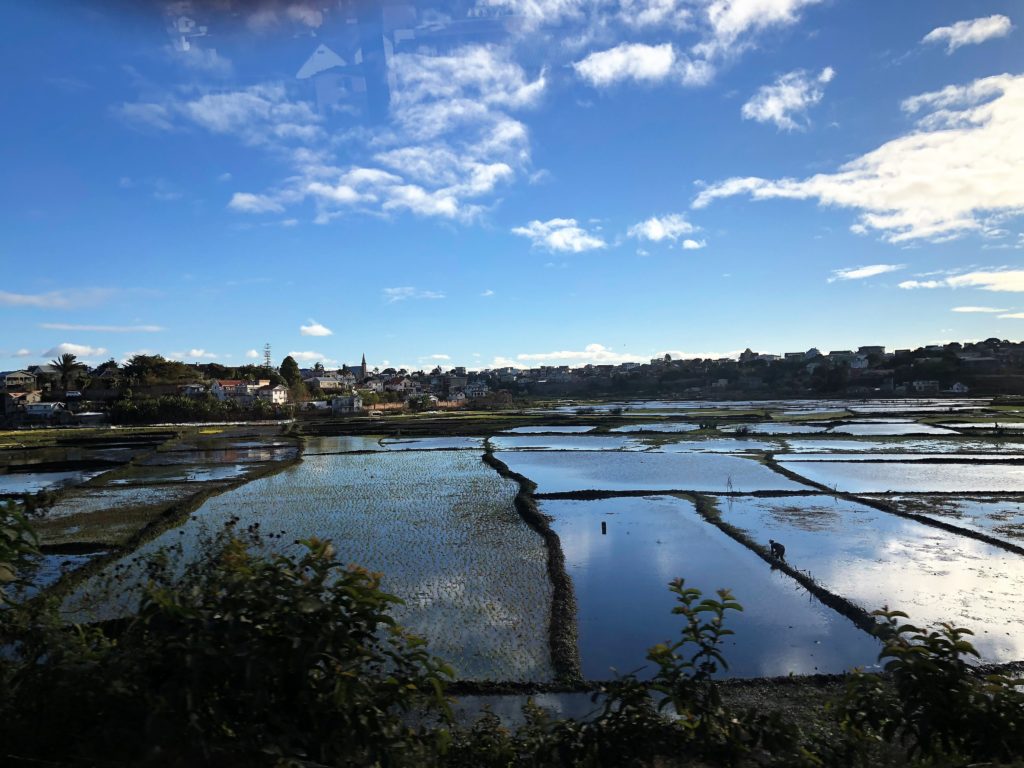 Antananarivo captivated us from the very beginning. Steve and I arrived here – after Kenya and Tanzania – early in the afternoon on the 23rd day of our African trip. After a “health inspection,” a chaotic and bureaucratic passport control (four people checked our passport lazily while visitors stood in line impatiently), and visa buying (it was issued here upon arrival), we were finally admitted to the country; and with our English-speaking driver from a local travel agency, who was waiting for us at the airport, we were on our way to our hotel. As we drove through the city for an entire hour, we got the first glimpse of the unique life of the people, the life that seems to happen on the streets, by the road. We also got the first glimpse of the poverty that is present not only in this place of about 1.4 million people, but in the entire country.
Antananarivo captivated us from the very beginning. Steve and I arrived here – after Kenya and Tanzania – early in the afternoon on the 23rd day of our African trip. After a “health inspection,” a chaotic and bureaucratic passport control (four people checked our passport lazily while visitors stood in line impatiently), and visa buying (it was issued here upon arrival), we were finally admitted to the country; and with our English-speaking driver from a local travel agency, who was waiting for us at the airport, we were on our way to our hotel. As we drove through the city for an entire hour, we got the first glimpse of the unique life of the people, the life that seems to happen on the streets, by the road. We also got the first glimpse of the poverty that is present not only in this place of about 1.4 million people, but in the entire country.
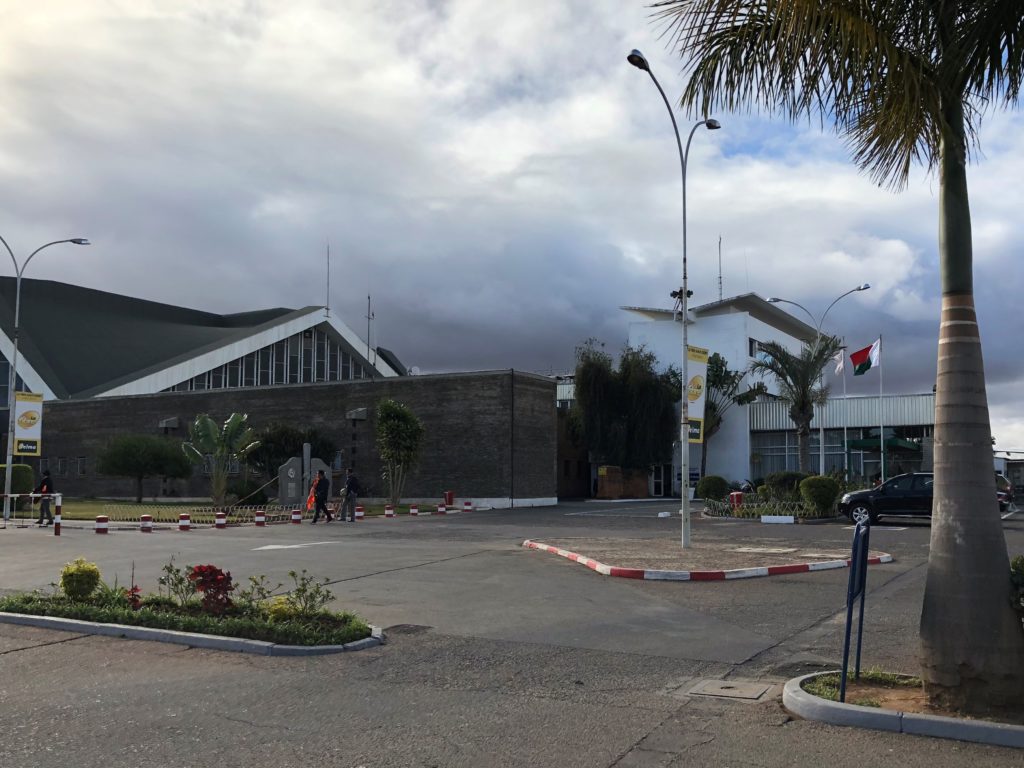
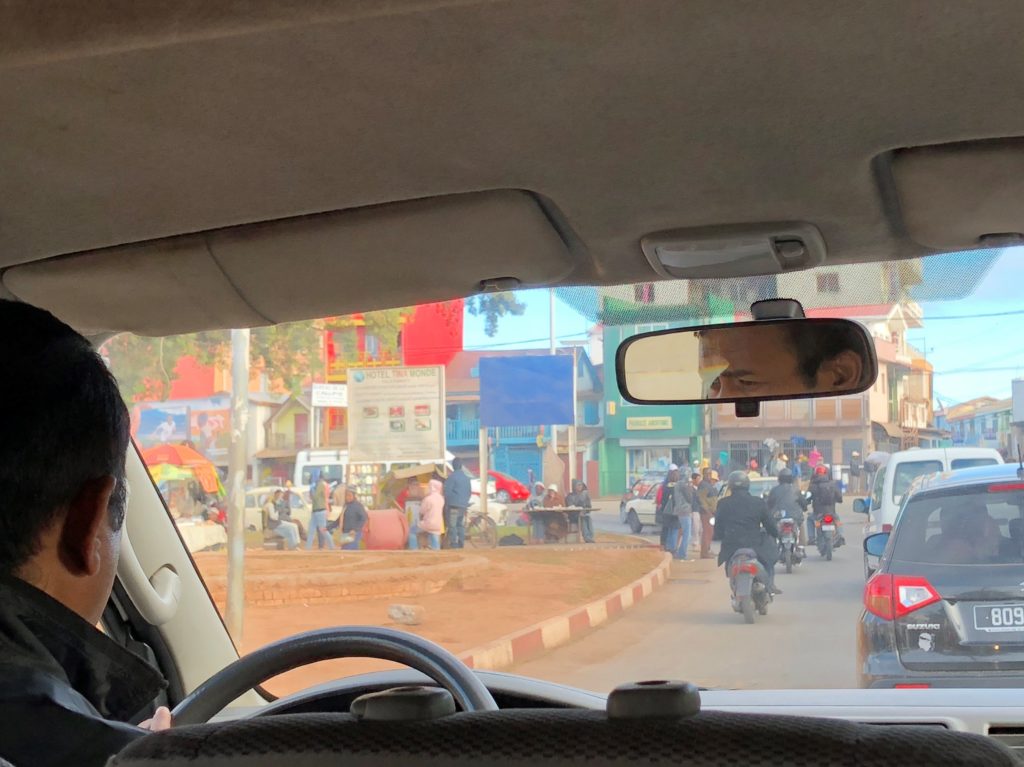
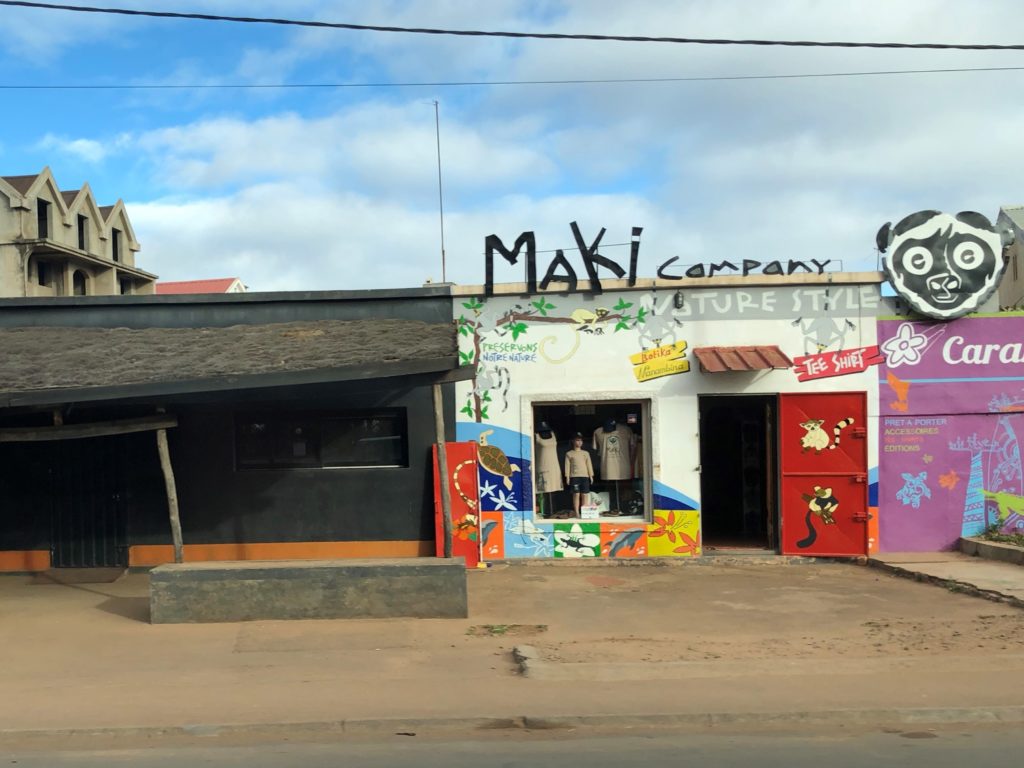


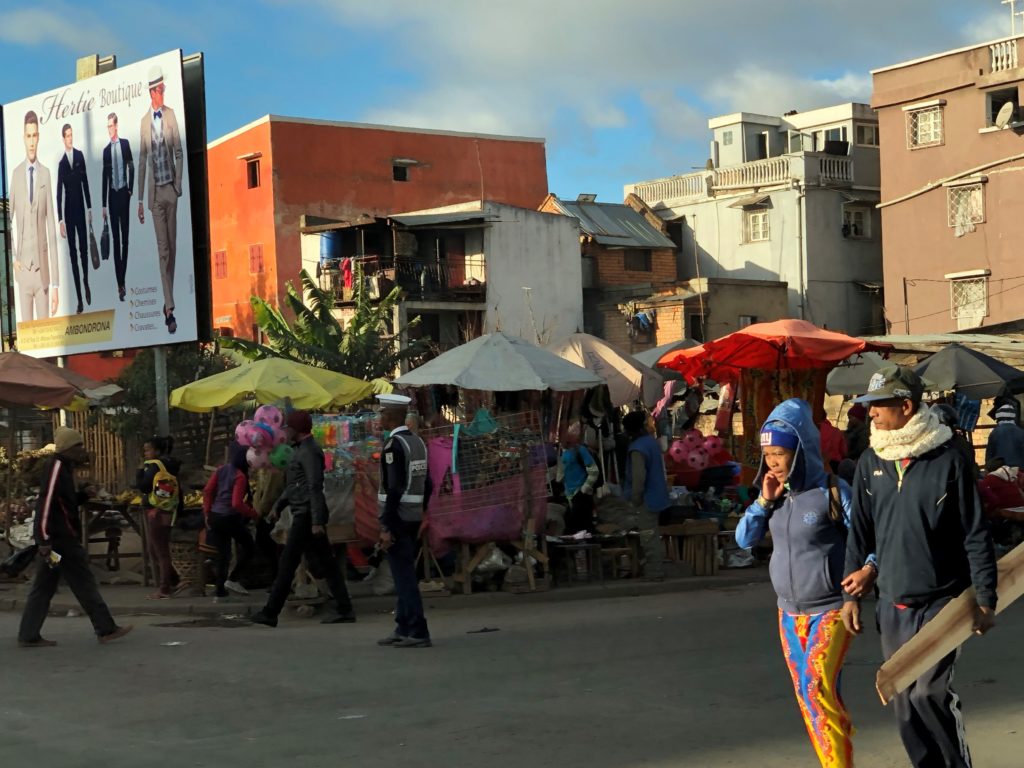 We had a similar experience seven more times during our stay in Madagascar, since every time we wanted to go visit other parts of the island, the extreme South or the extreme North, we needed to come back to the capital and fly out from here. We didn’t set aside a full day to discover the city, but we did do some sightseeing one afternoon and got a feel for the workings of the place during the many drives through and during our walks around our hotel.
We had a similar experience seven more times during our stay in Madagascar, since every time we wanted to go visit other parts of the island, the extreme South or the extreme North, we needed to come back to the capital and fly out from here. We didn’t set aside a full day to discover the city, but we did do some sightseeing one afternoon and got a feel for the workings of the place during the many drives through and during our walks around our hotel.
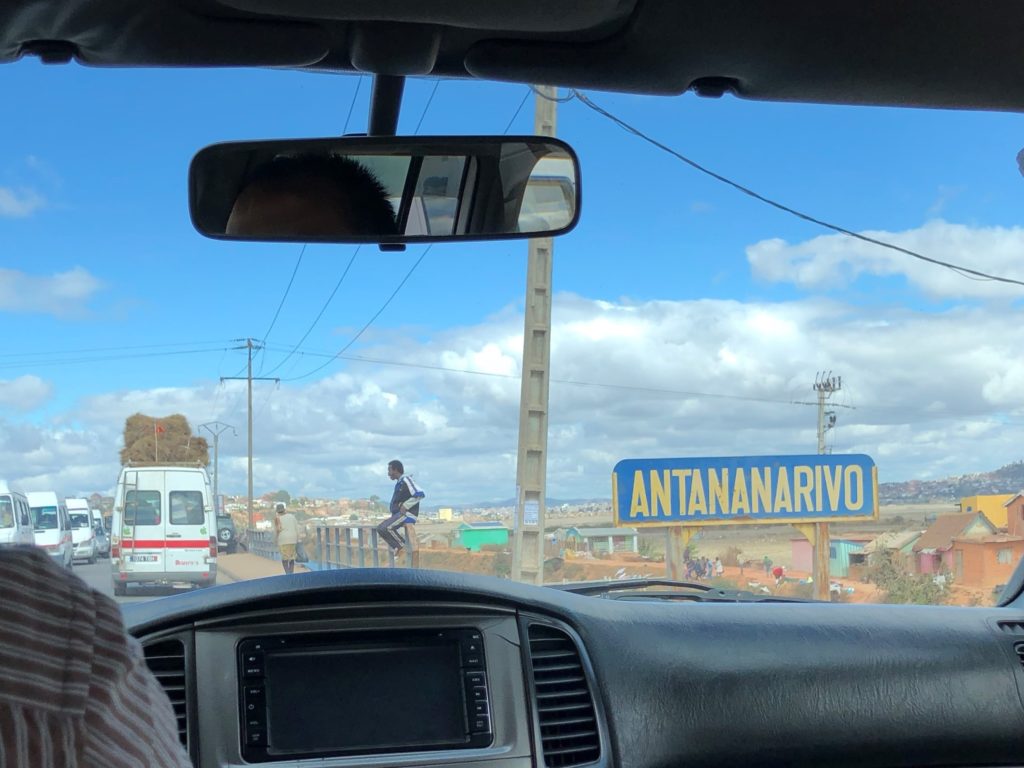


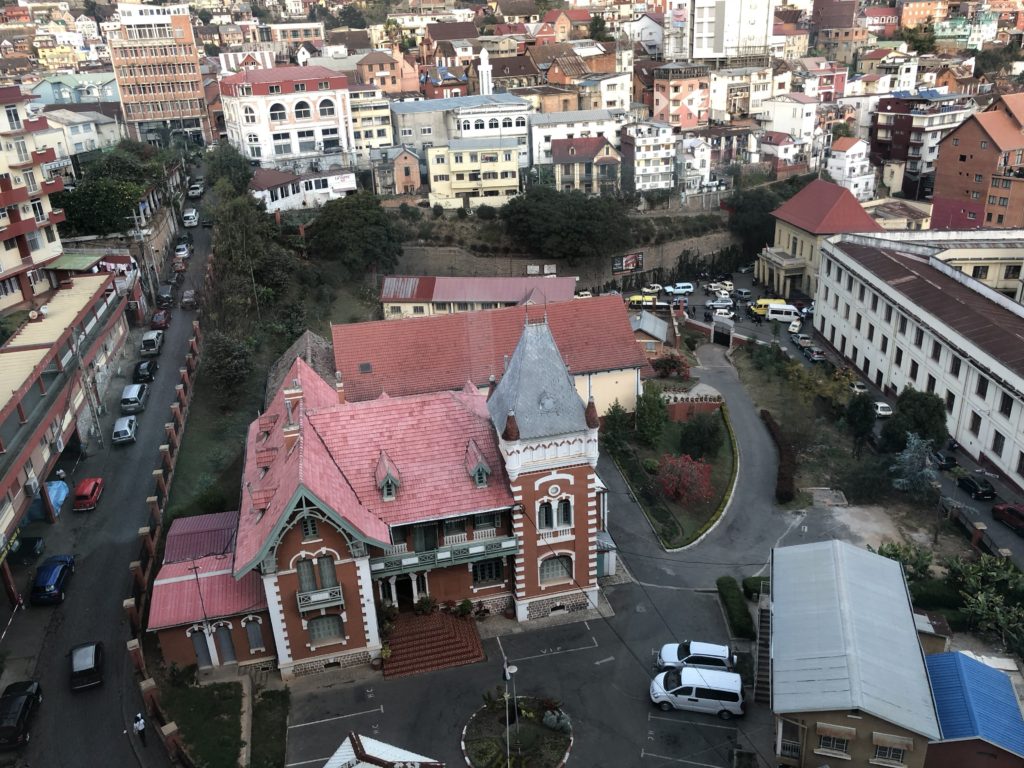 The city, which dates its birth back to 1610, was built on many hills in three layers. The lower city is home to the poorest, and as you go though the middle city, you reach (climb or drive) the upper city, the home of the wealthier, reaching the highest point (about 4700 feet).
The city, which dates its birth back to 1610, was built on many hills in three layers. The lower city is home to the poorest, and as you go though the middle city, you reach (climb or drive) the upper city, the home of the wealthier, reaching the highest point (about 4700 feet).
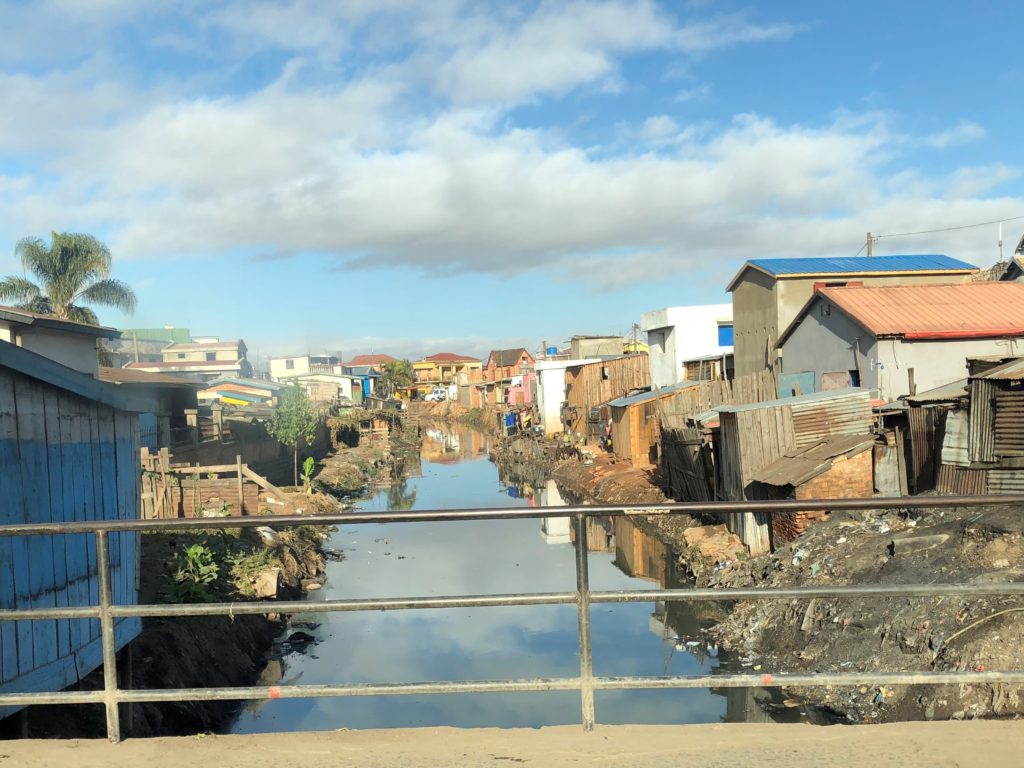

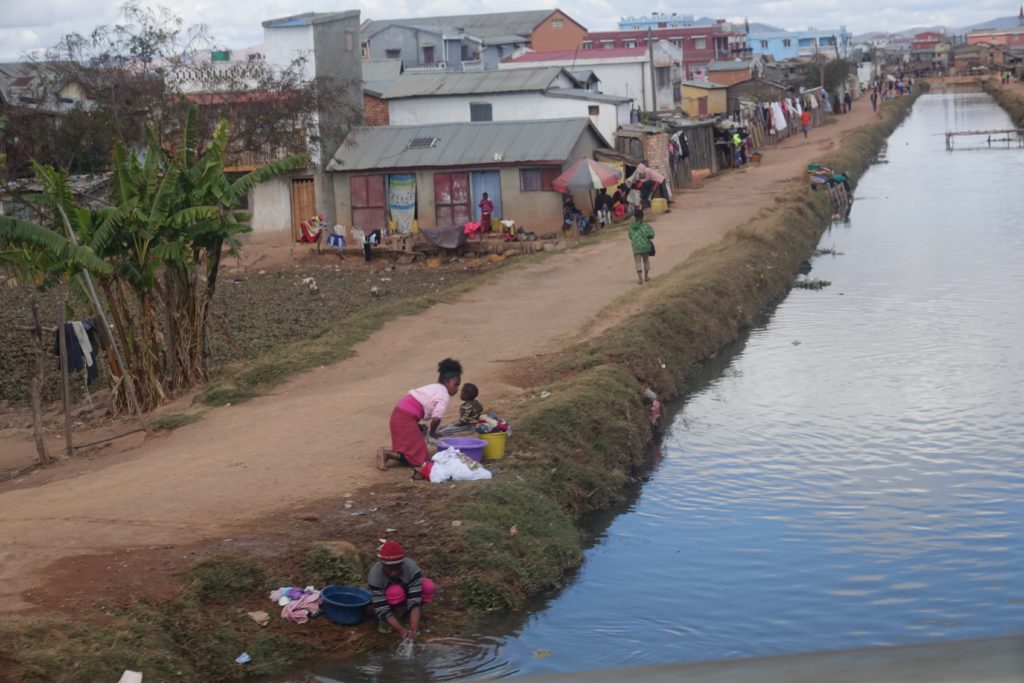
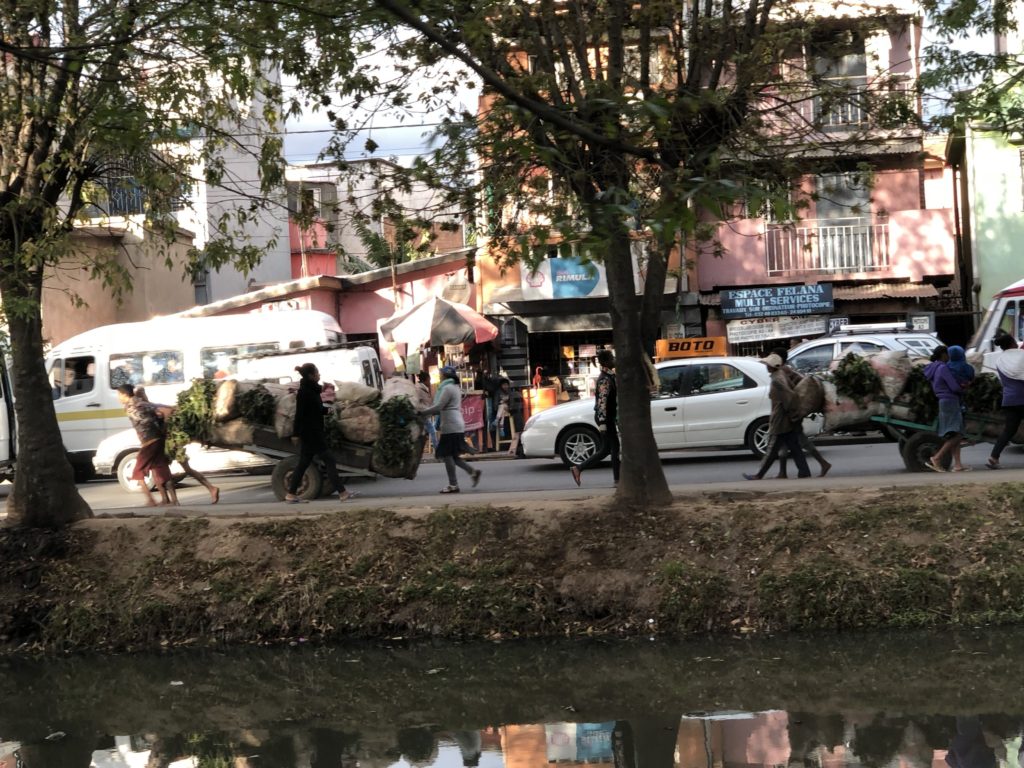
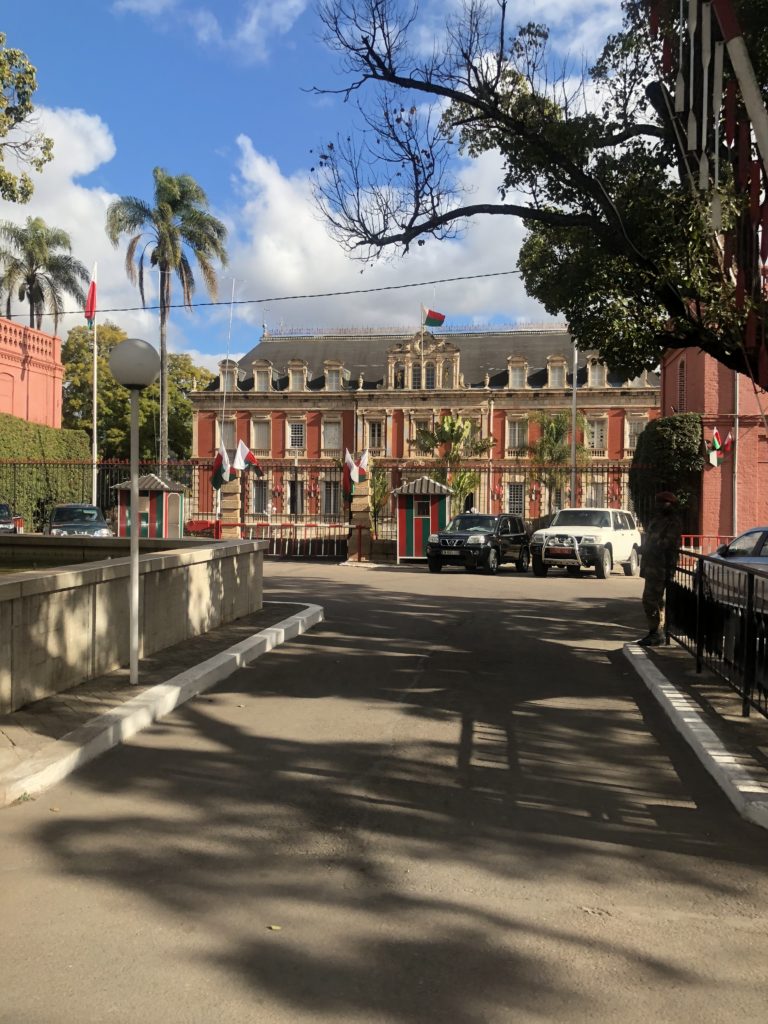

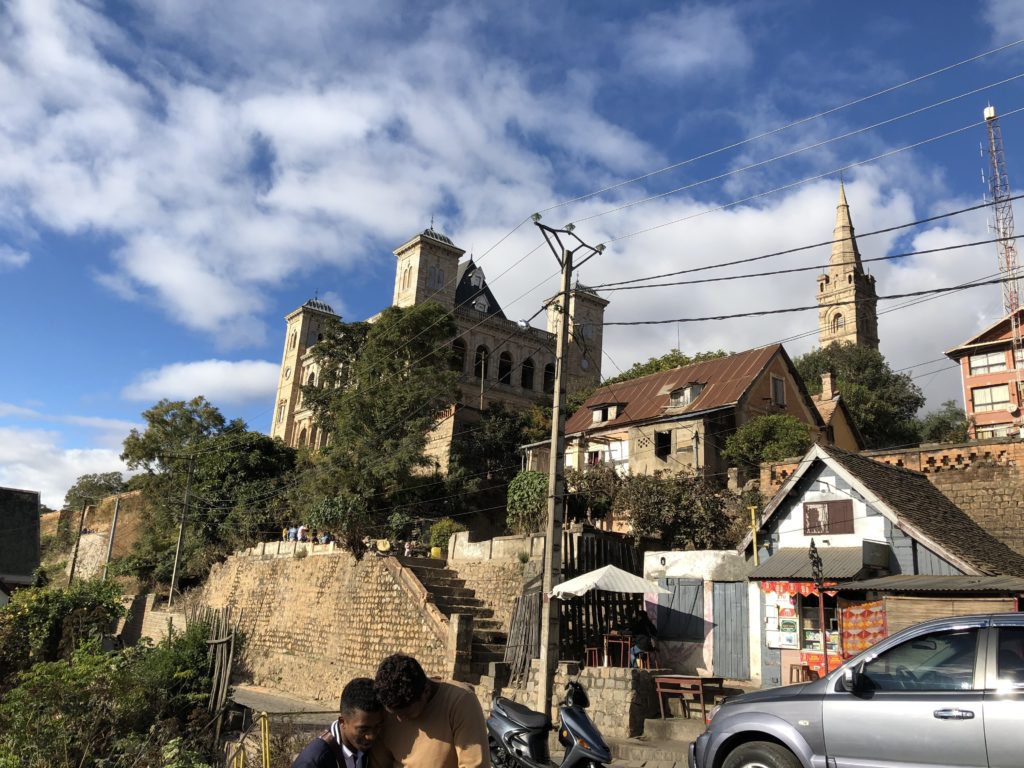 From the highest point (close to the Royal Palace), you get the majestic 360-degree view of the city and as you explore the surroundings, you see many newly renovated houses. Today, Tana is the political, educational, cultural, and economic center of Madagascar.
From the highest point (close to the Royal Palace), you get the majestic 360-degree view of the city and as you explore the surroundings, you see many newly renovated houses. Today, Tana is the political, educational, cultural, and economic center of Madagascar.
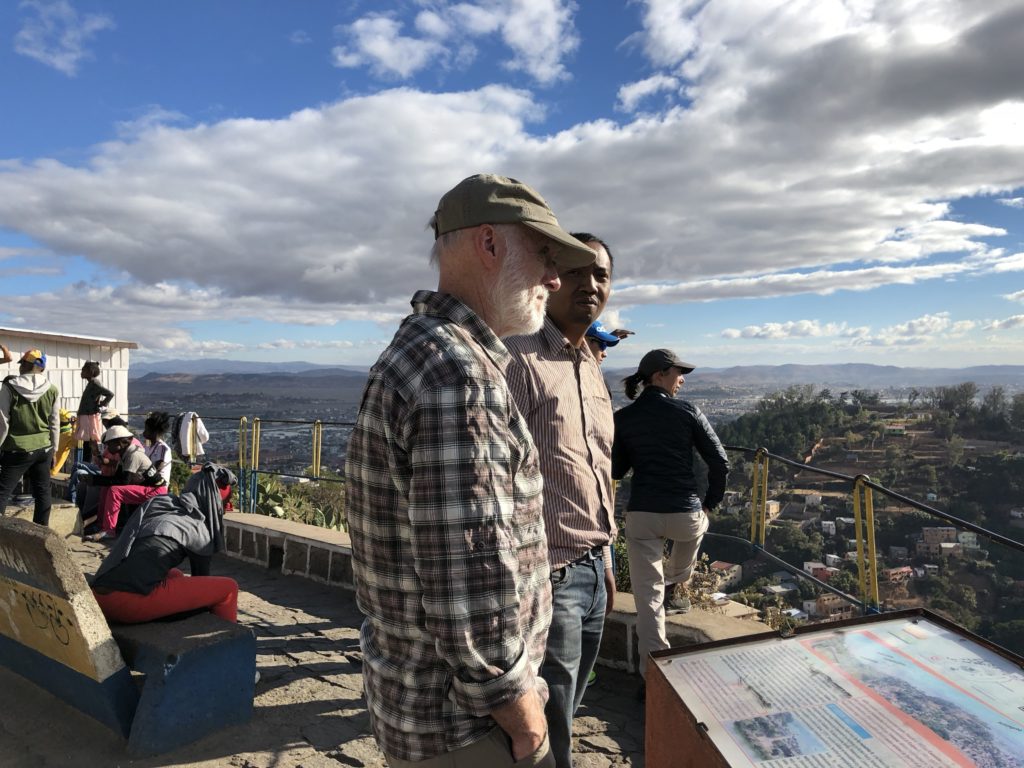
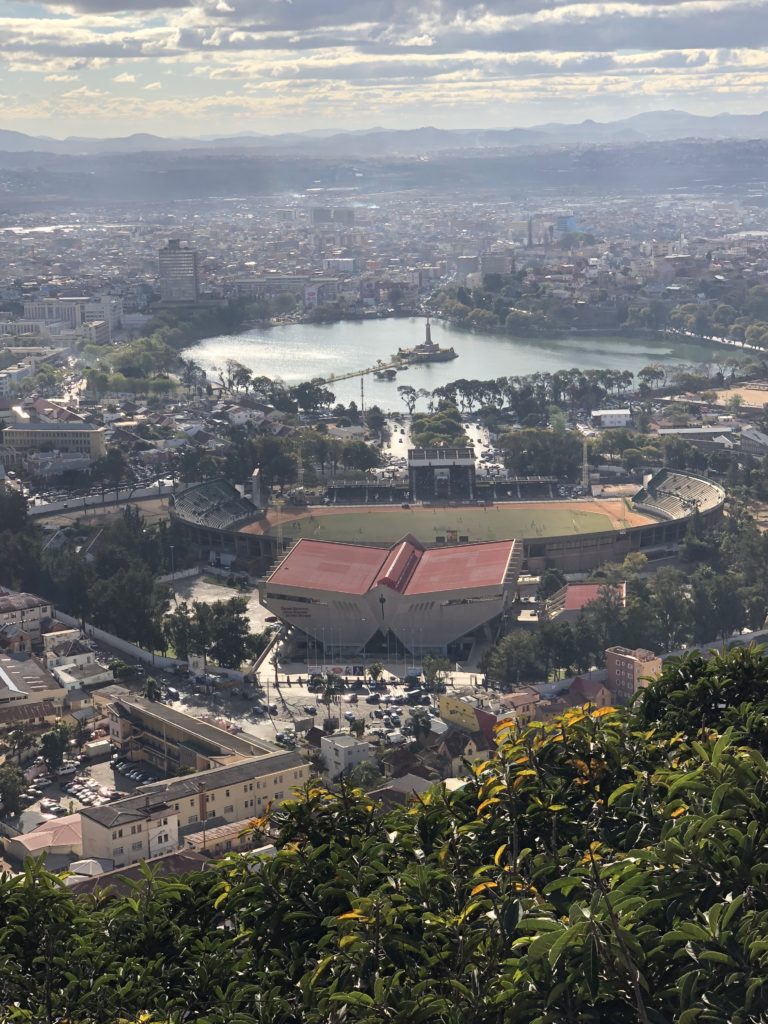
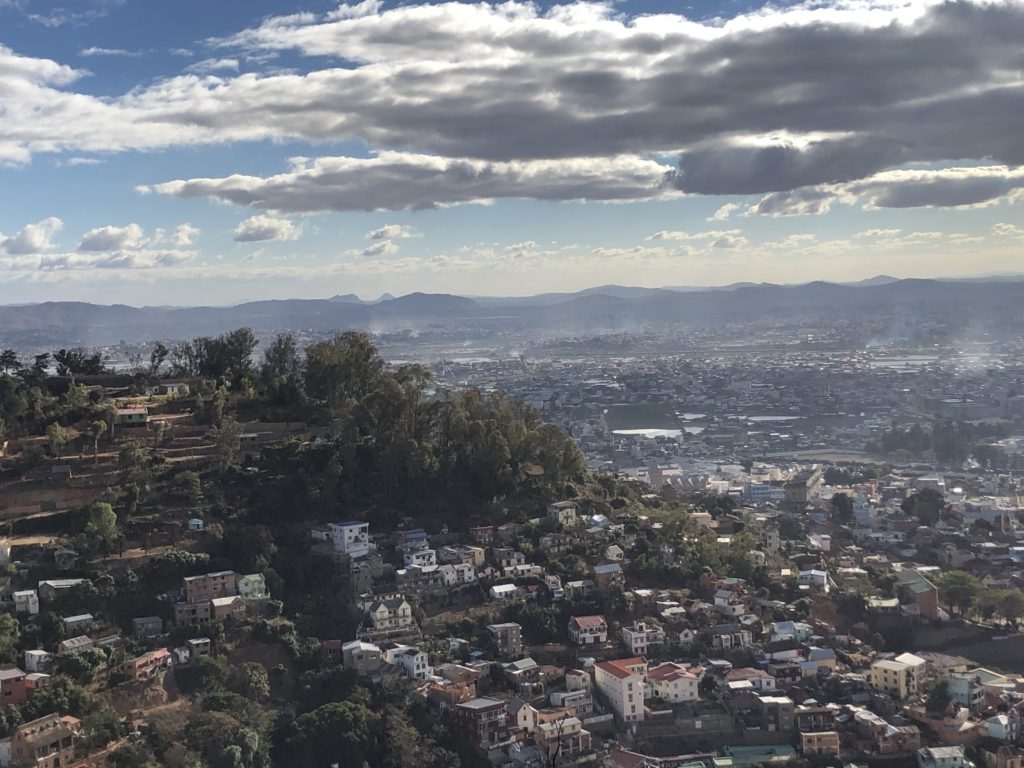
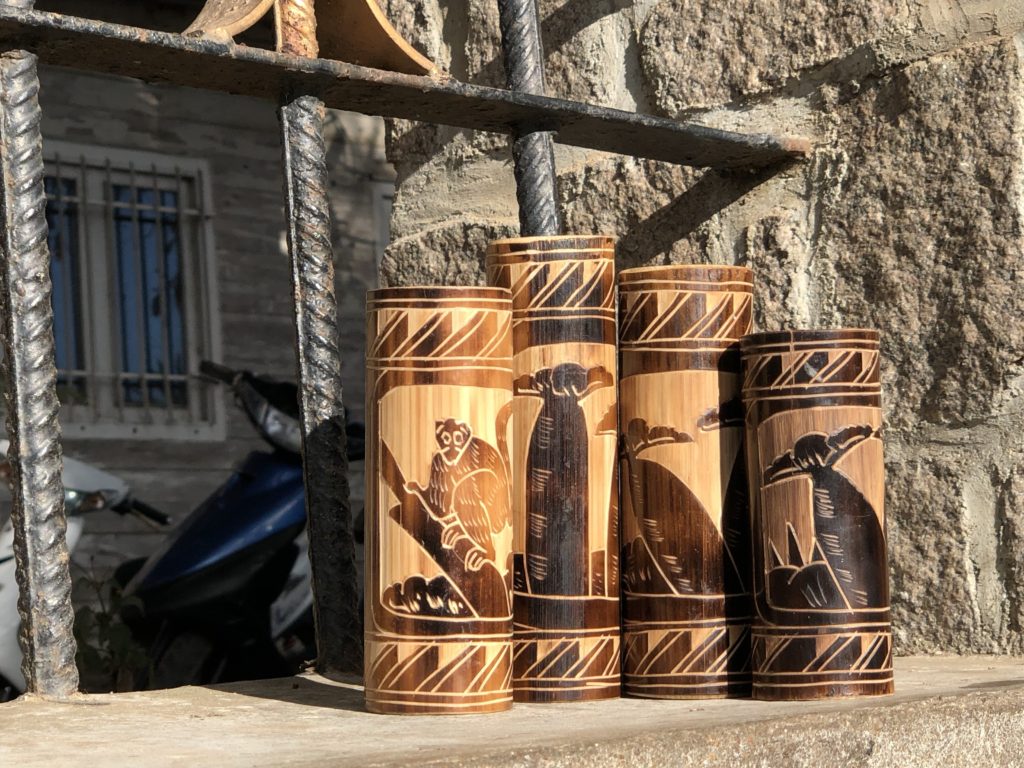
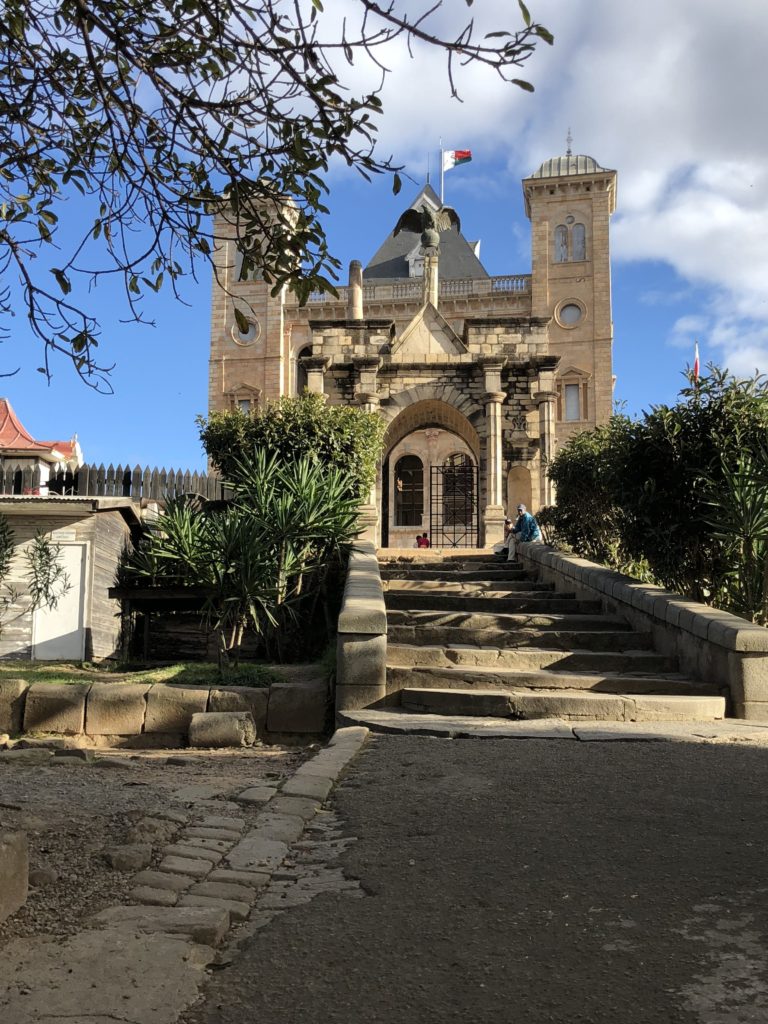
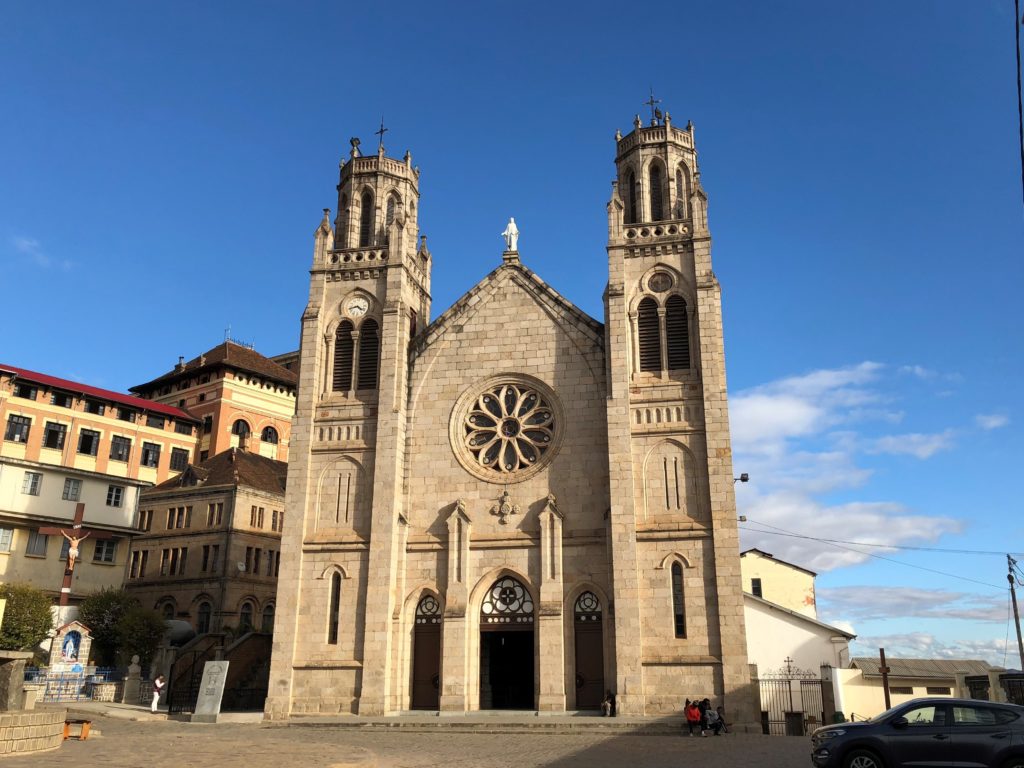
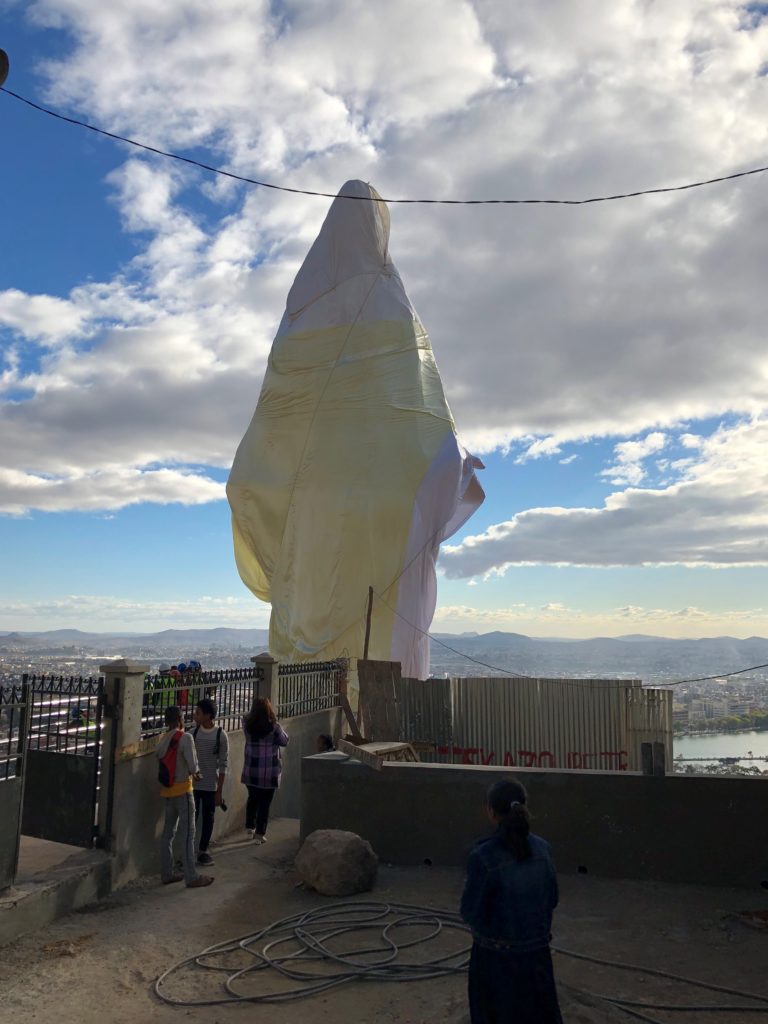
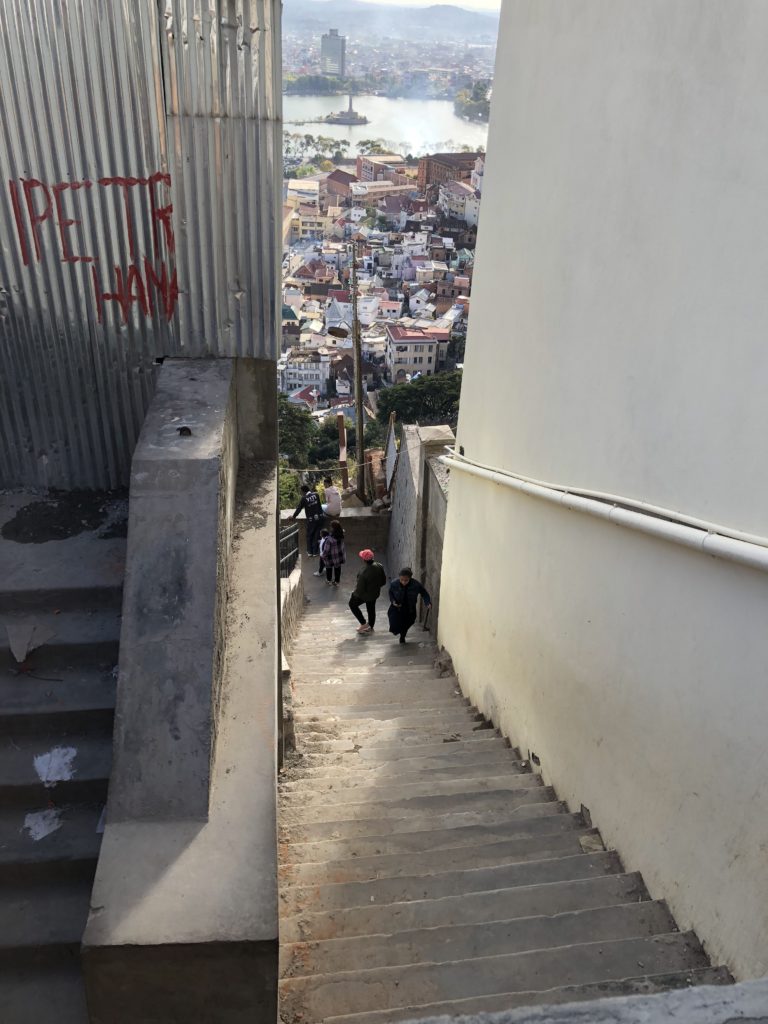 Tana is teeming, and its streets are chaotic and crowded. No boulevards, no promenades. It has ridiculous traffic with no rules. We saw modern cars next to man-pulled carts, small buses that seemingly stopped randomly, uncountable motorcycles, vegetable, fruit, and meat stands by garbage piles, an occasional zebu by the road, and the beggars at every turn. A heart-breaking experience – at least it was for me (especially when the beggar was a young girl with a baby in her arms)!
Tana is teeming, and its streets are chaotic and crowded. No boulevards, no promenades. It has ridiculous traffic with no rules. We saw modern cars next to man-pulled carts, small buses that seemingly stopped randomly, uncountable motorcycles, vegetable, fruit, and meat stands by garbage piles, an occasional zebu by the road, and the beggars at every turn. A heart-breaking experience – at least it was for me (especially when the beggar was a young girl with a baby in her arms)!
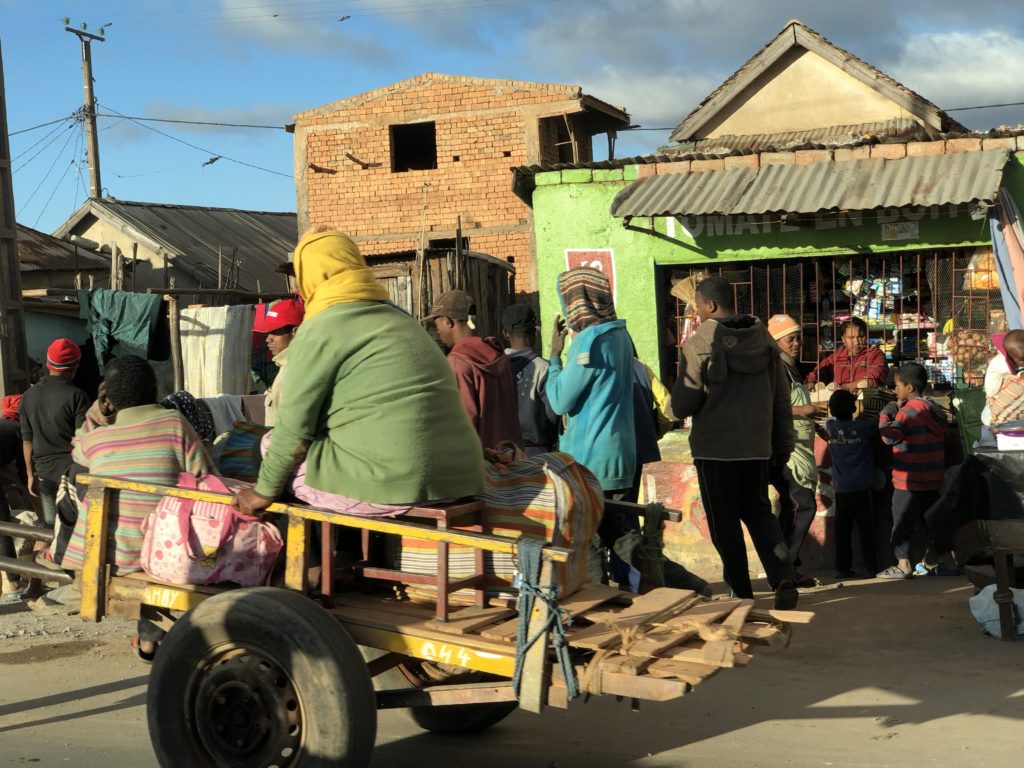
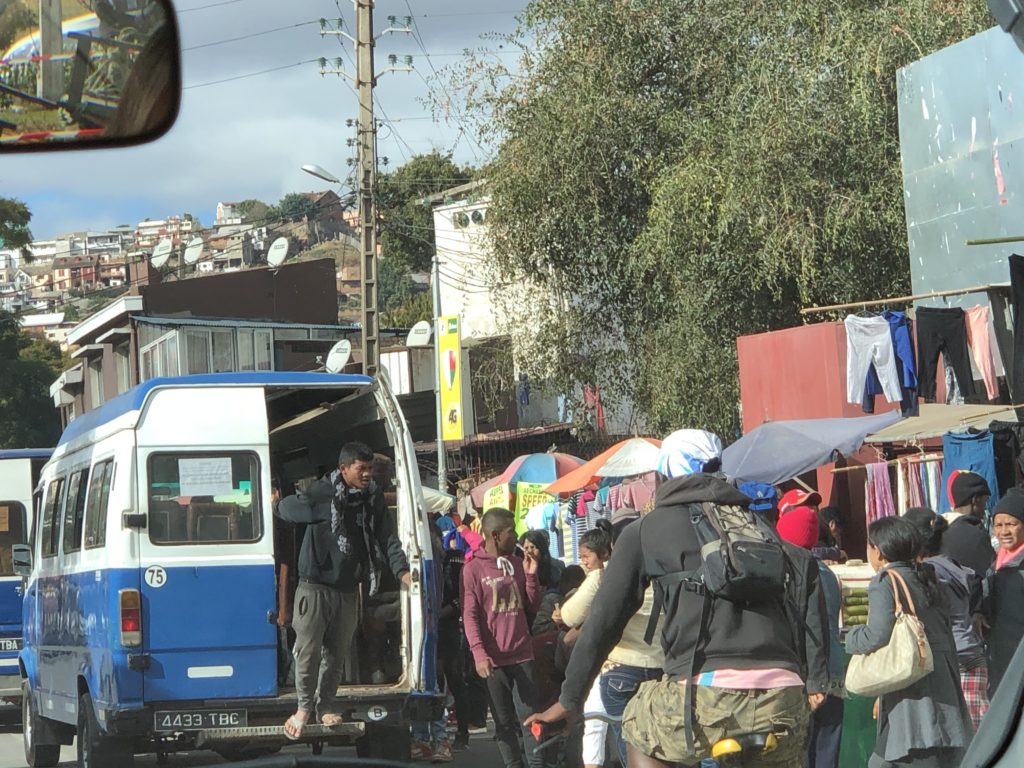
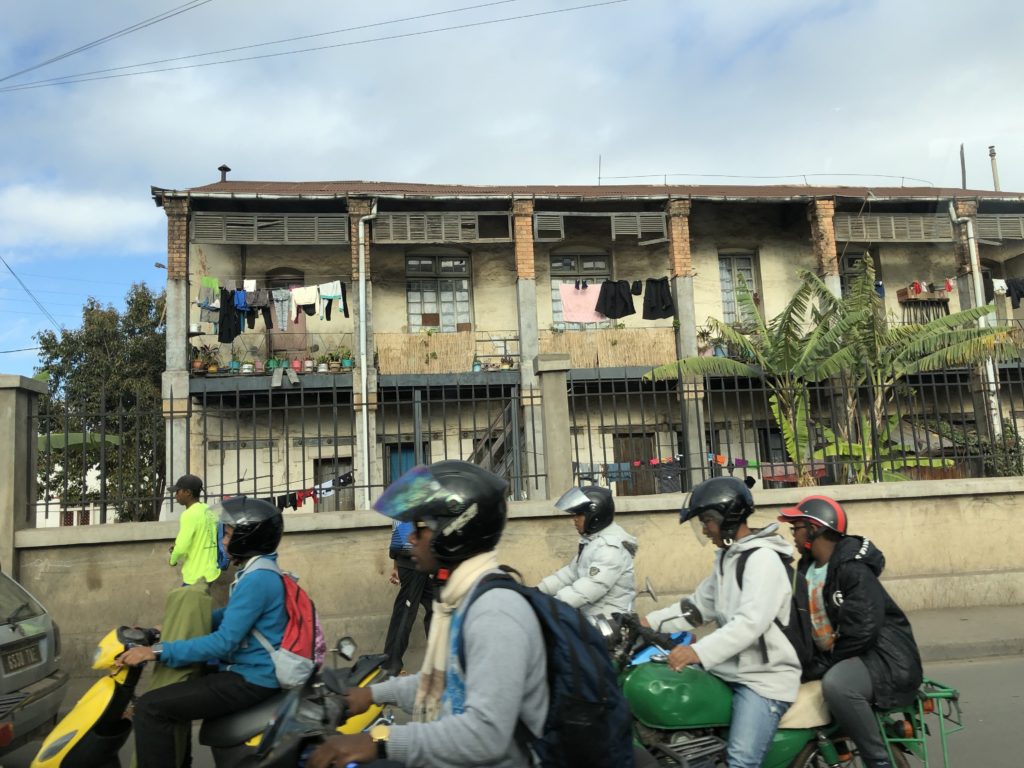
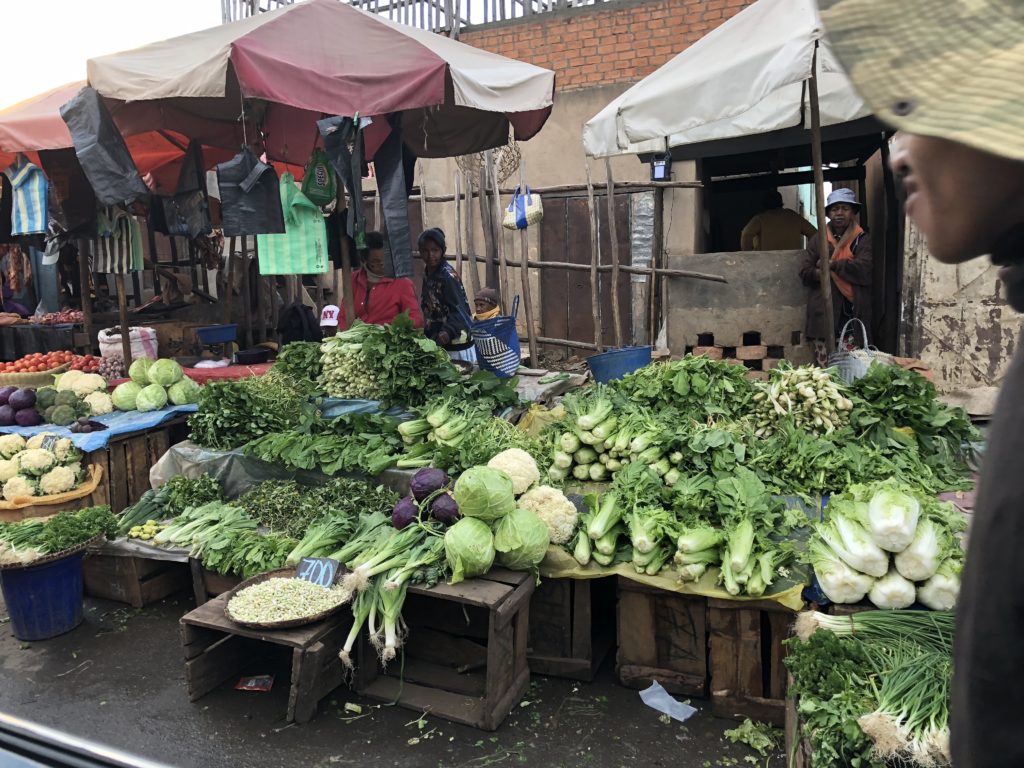

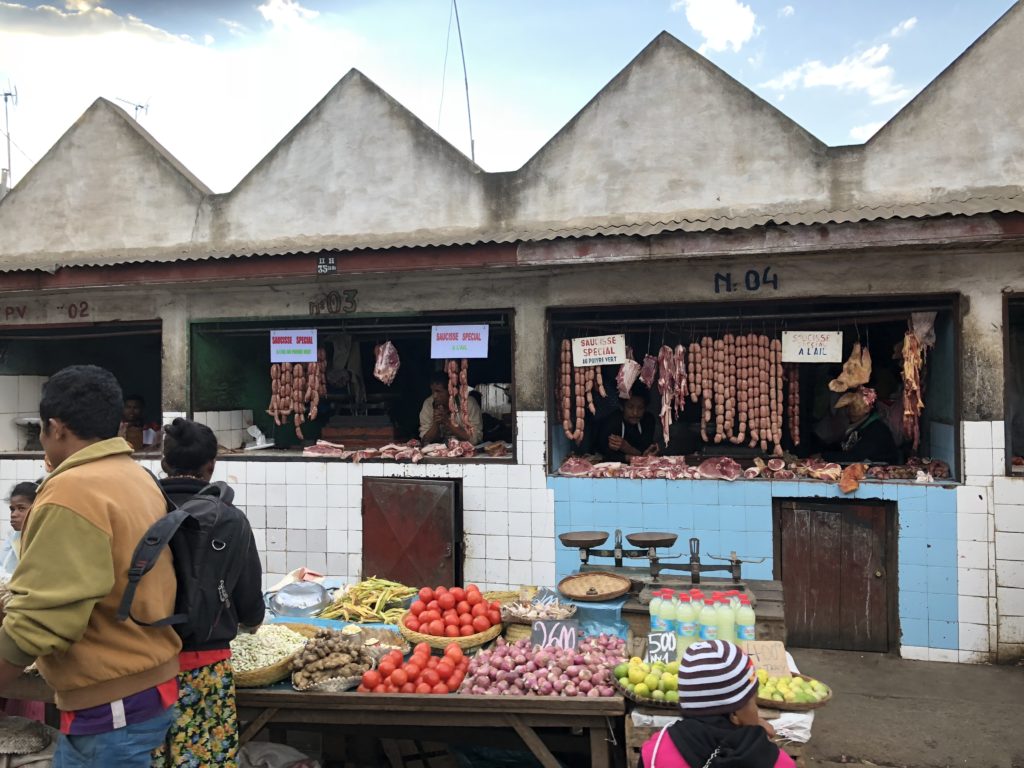
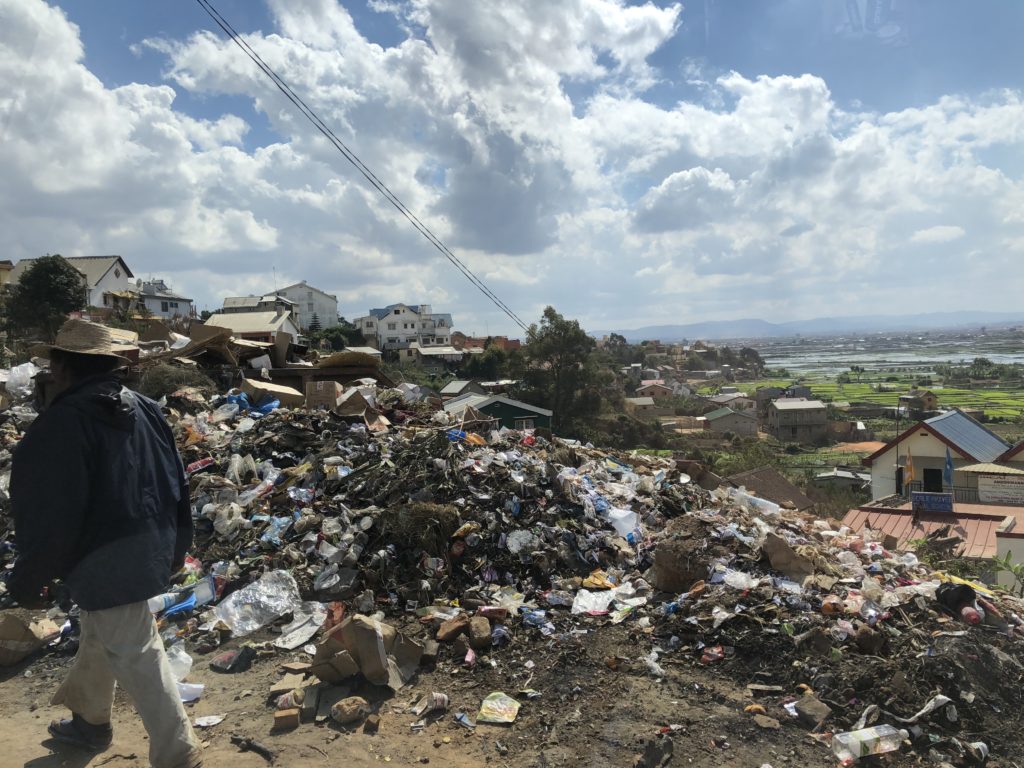
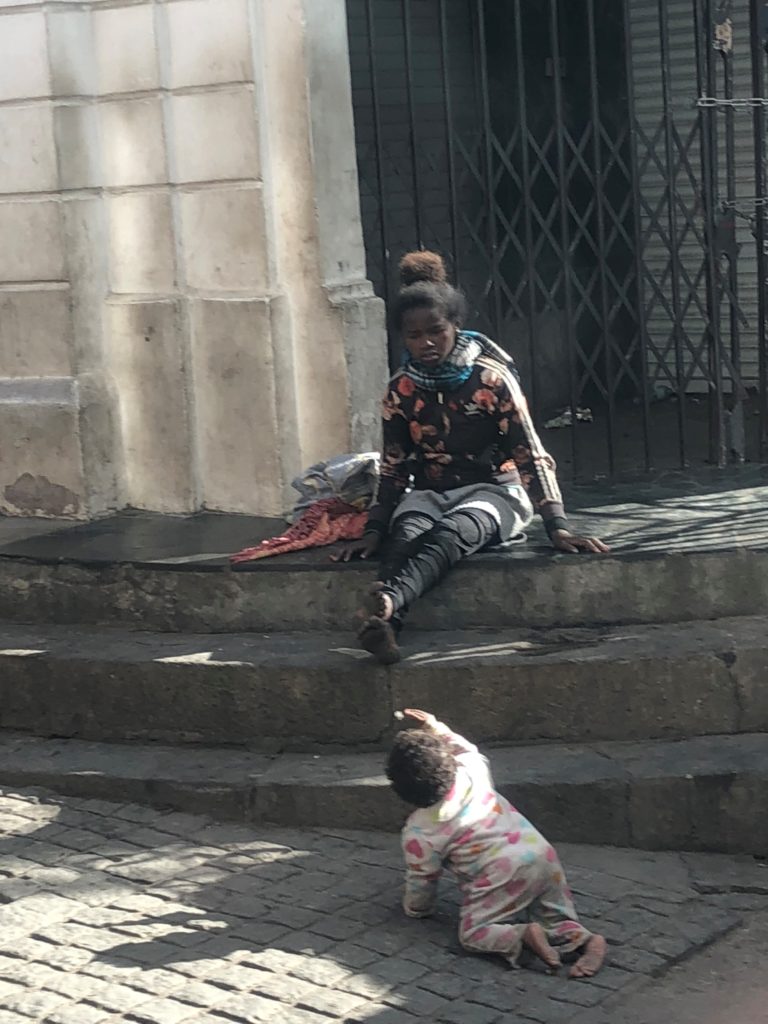 House after house (many of them painted with advertisements), people and more people everywhere, rice paddies between the houses in the midst of the city.
House after house (many of them painted with advertisements), people and more people everywhere, rice paddies between the houses in the midst of the city.
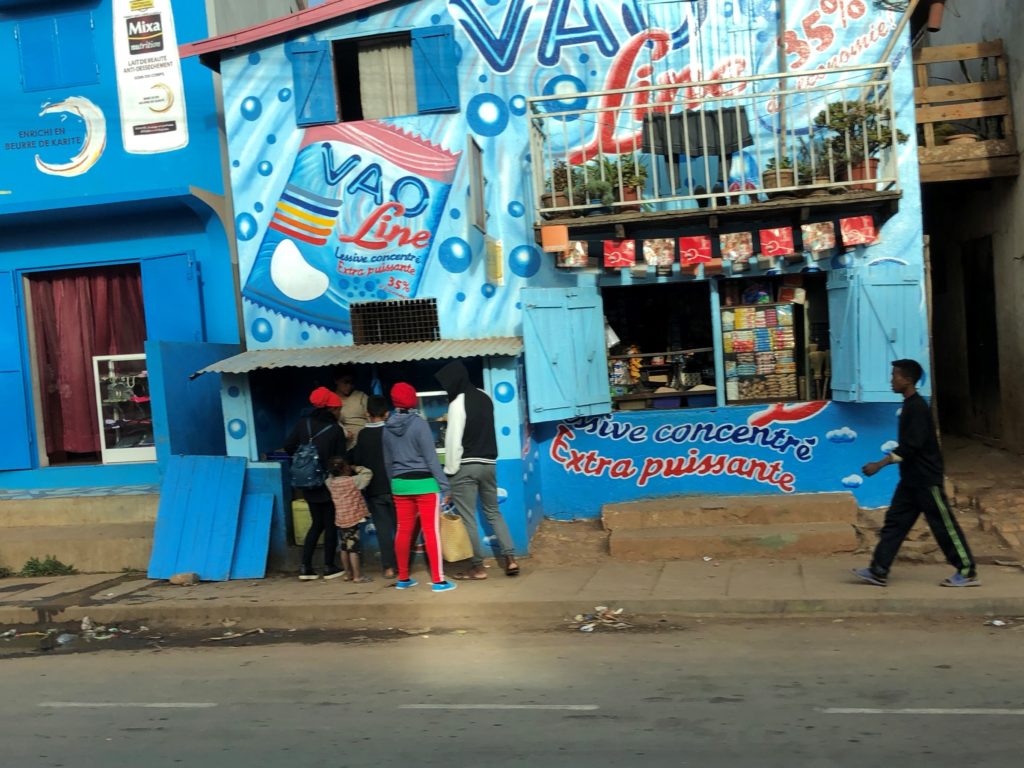
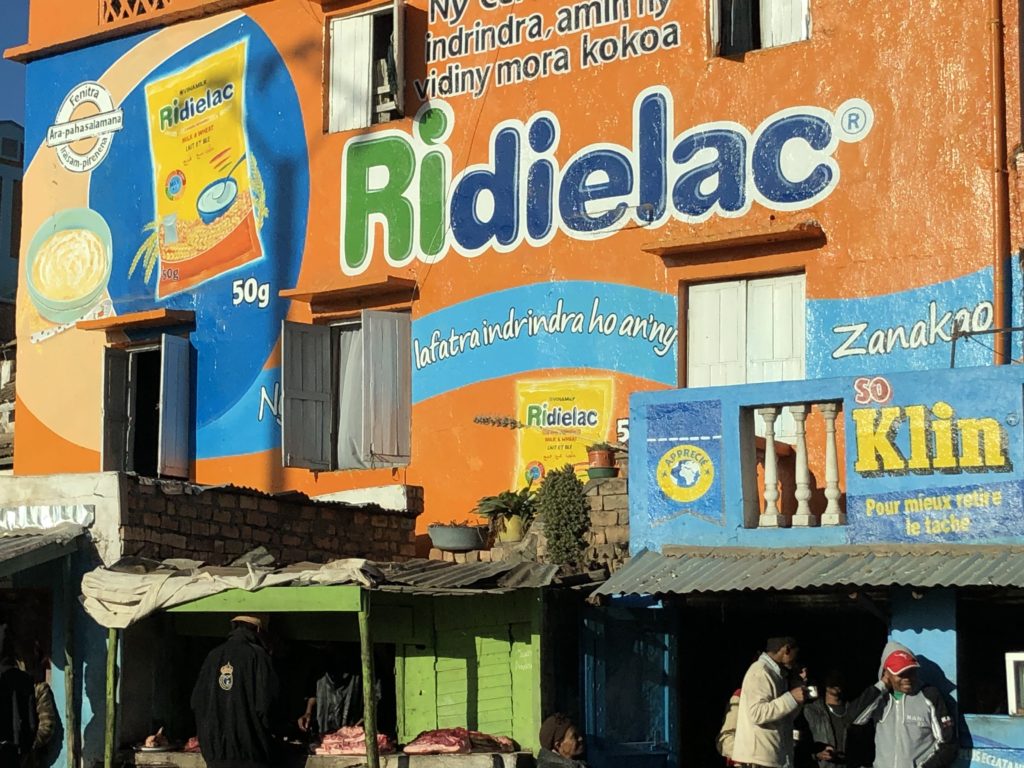
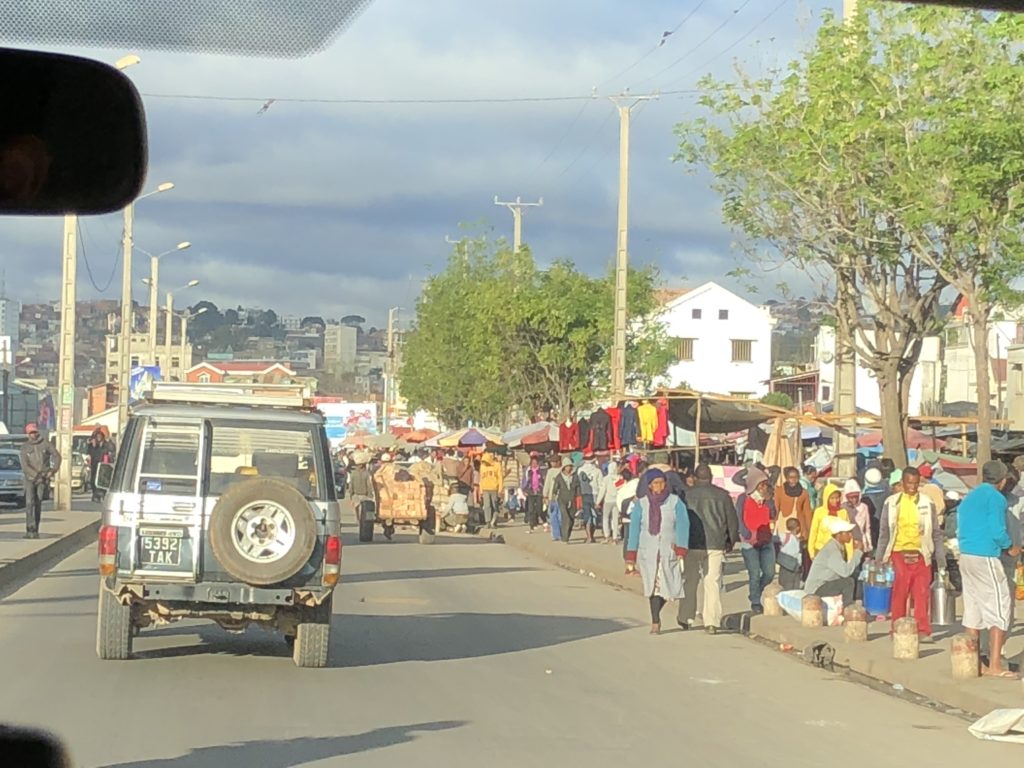
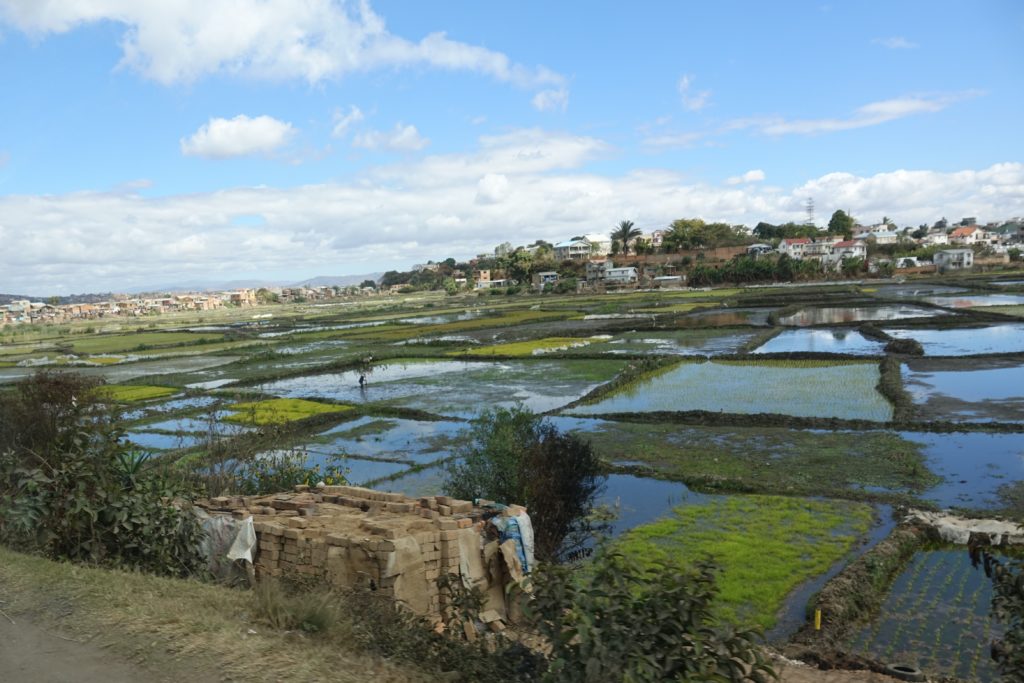
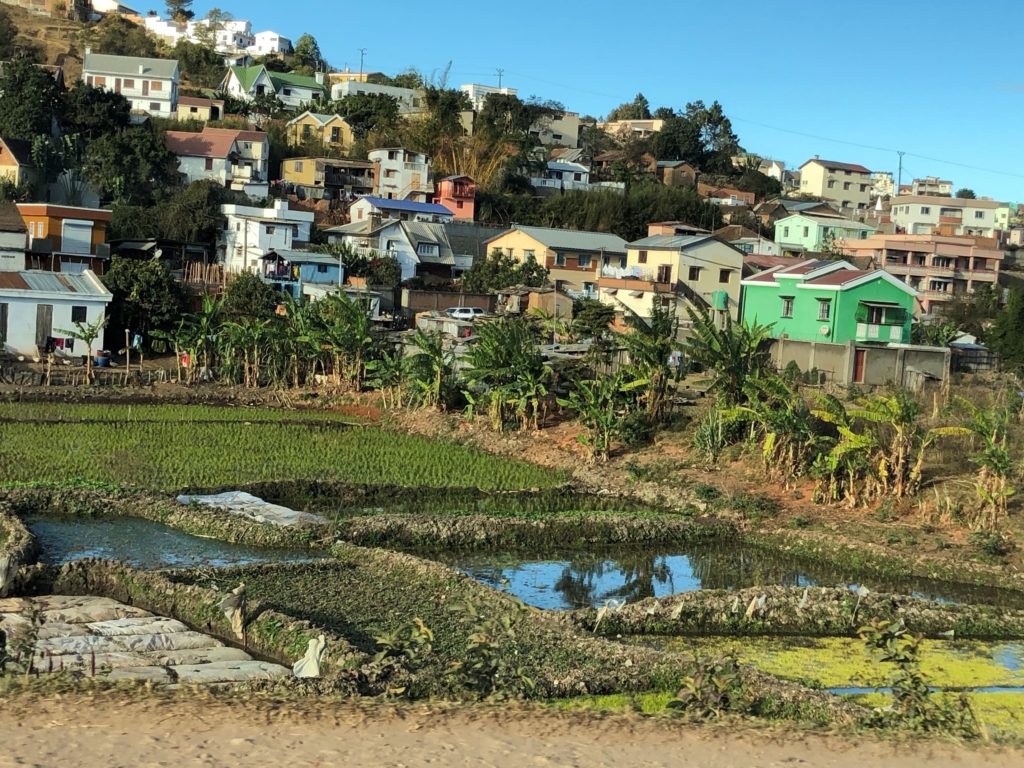 Unexpected sights, sights full of surprises.
Unexpected sights, sights full of surprises.

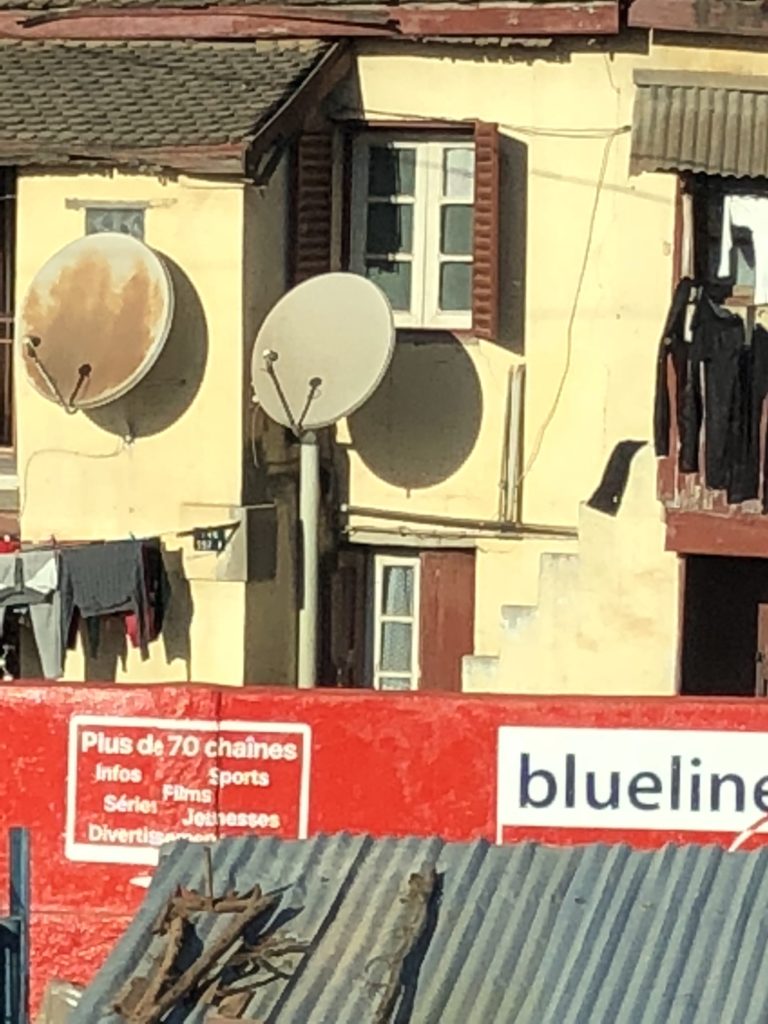

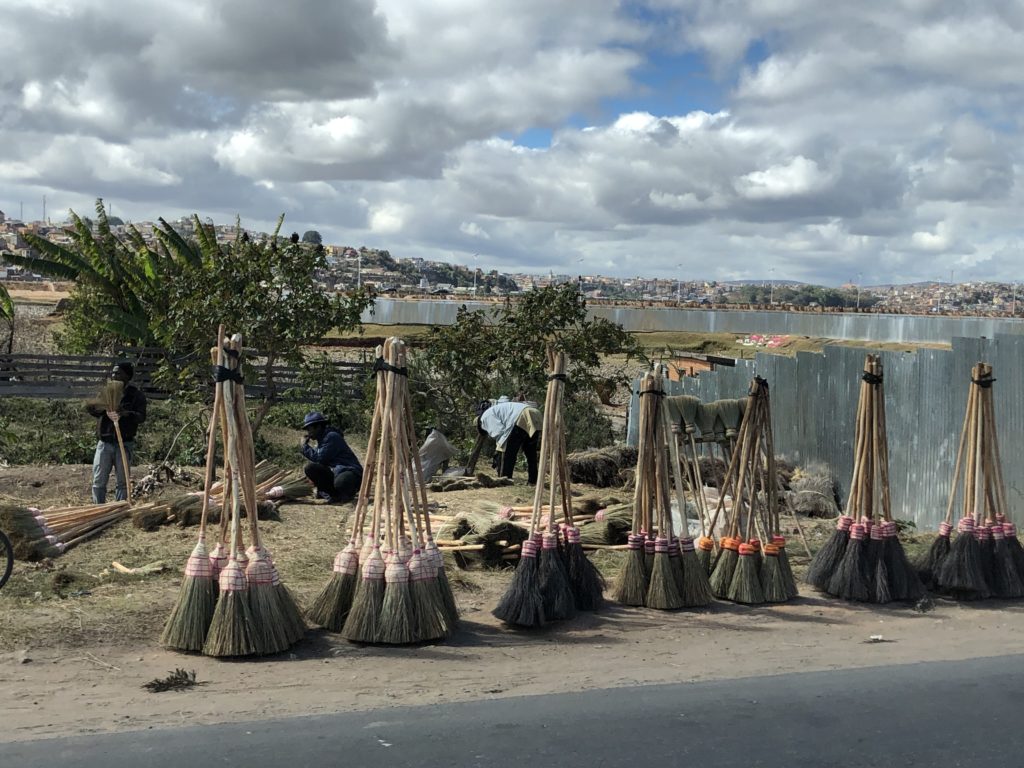 Tana is a city full of life, full of potential, but don’t expect anything you know about capital cities of Europe or major American cities. Get ready for the unexpected. A visit to Antananarivo, this most colorful and beautiful place on Earth, is worthwhile.
Tana is a city full of life, full of potential, but don’t expect anything you know about capital cities of Europe or major American cities. Get ready for the unexpected. A visit to Antananarivo, this most colorful and beautiful place on Earth, is worthwhile.
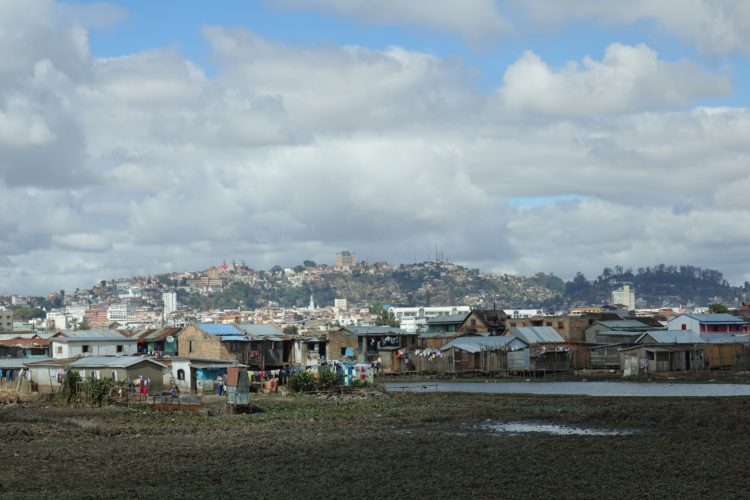
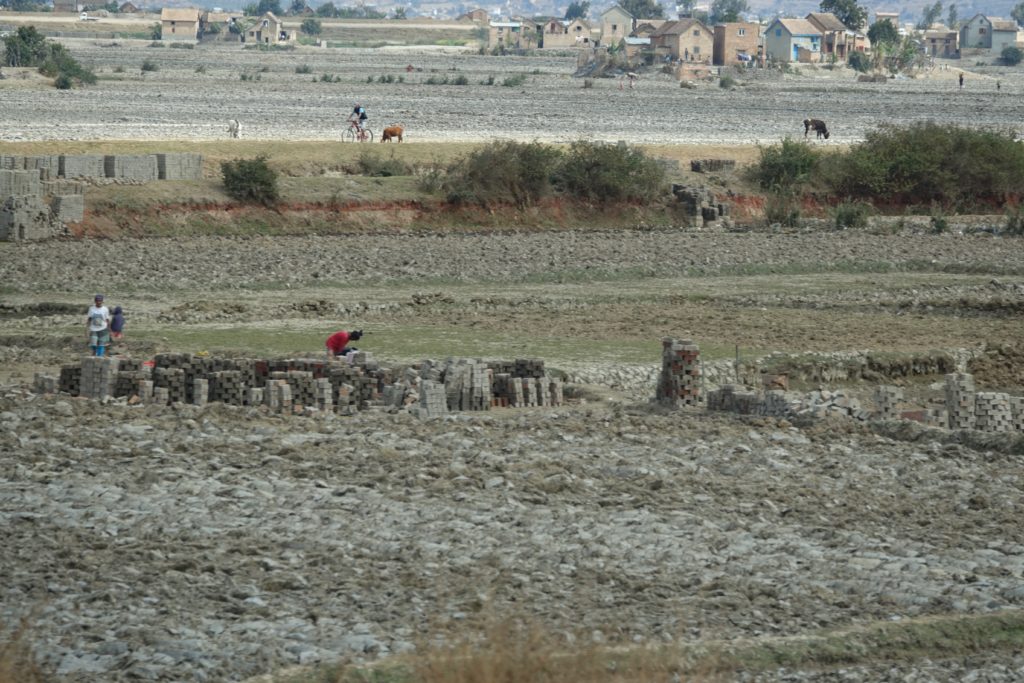
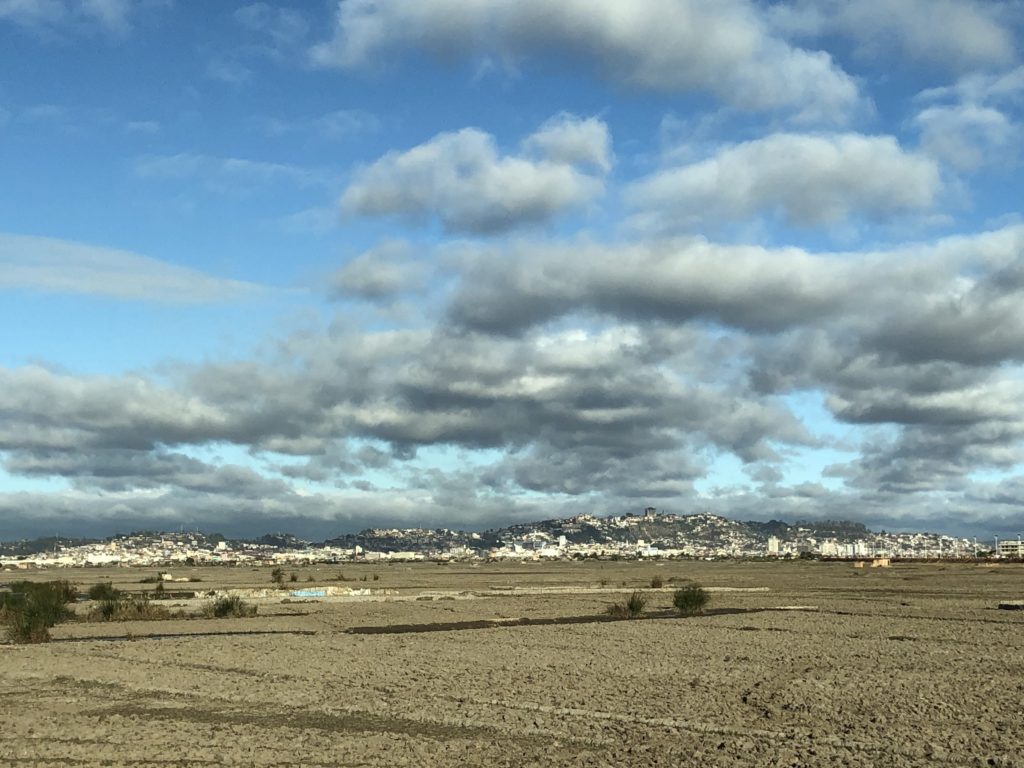





Wow! Thanks!
Thank you for checking out my photos.
It is heart-breaking for sure to see the lower part of the city or the poorest in any country.